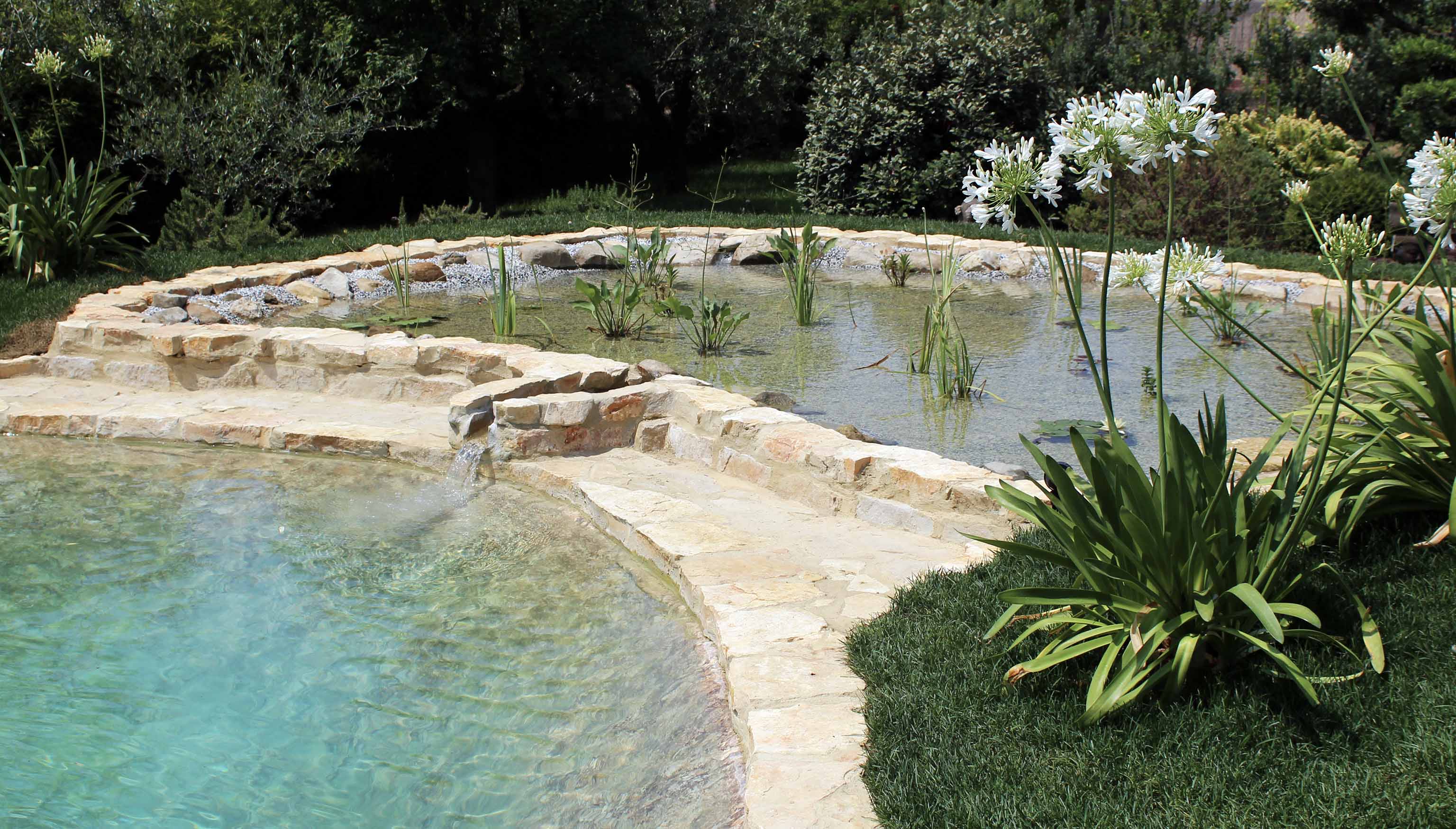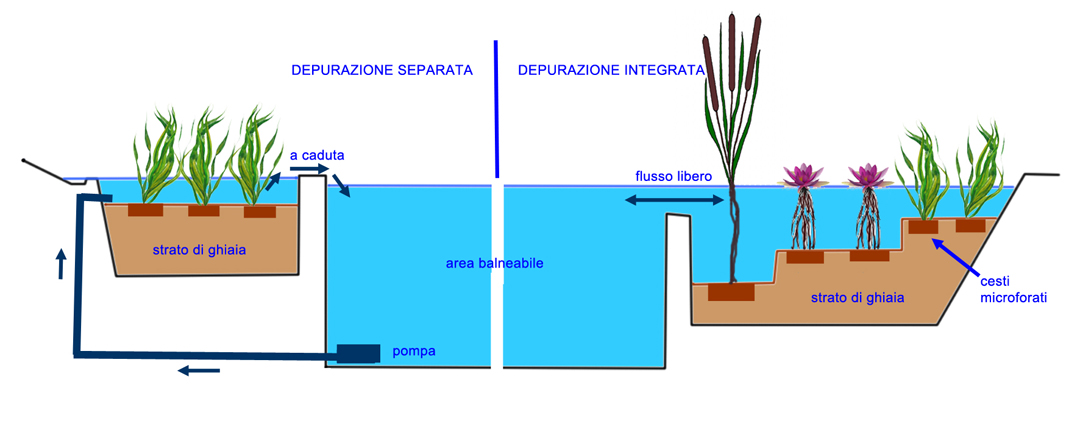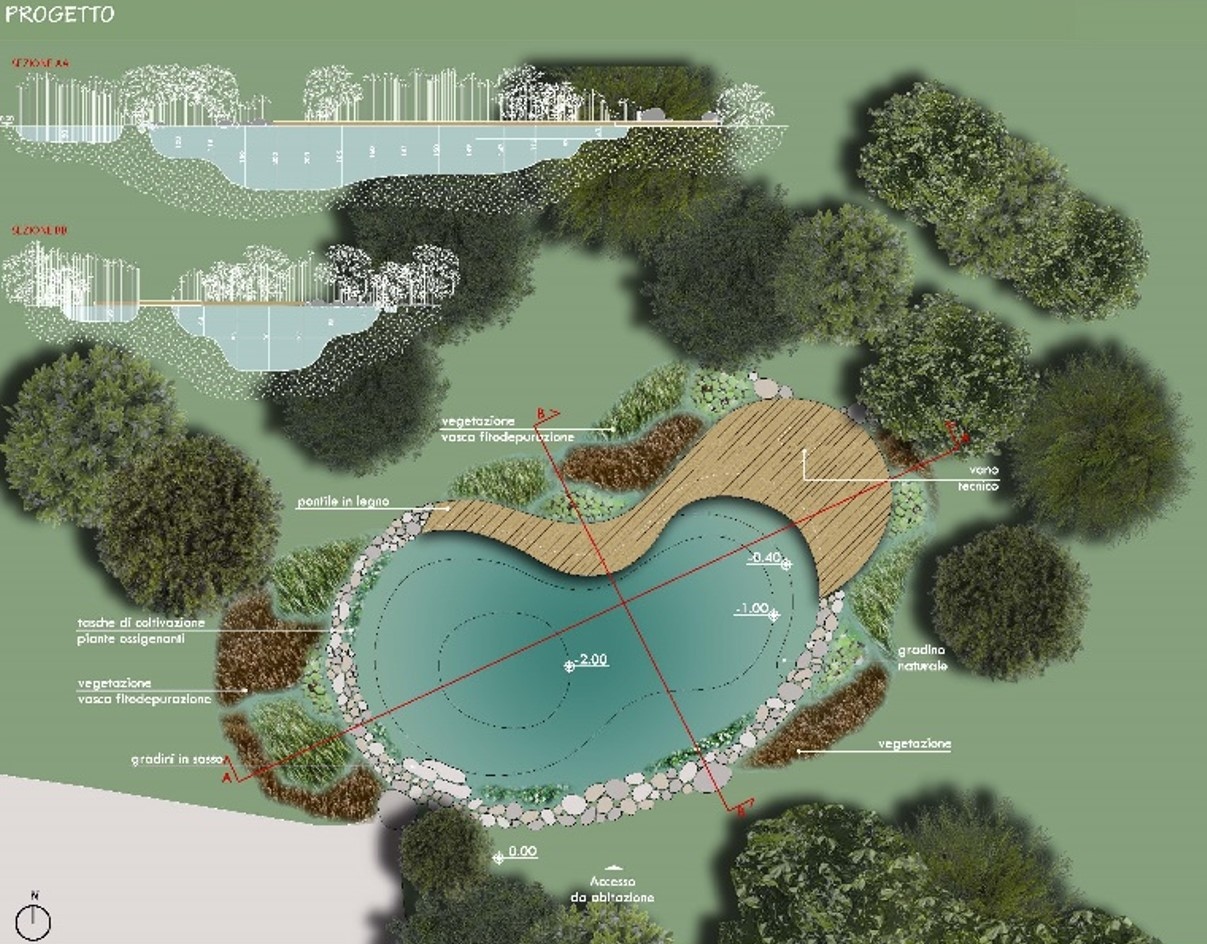The bio-pool (as well as the bio-lake) is an artificial pool of water for bathing in which purification is carried out exclusively in a natural way, without the use of chemicals. The principle on which the bio-pool is based is phytodepuration, a natural purification system applied for some time in the treatment of waste water, mainly agricultural but also domestic and sometimes industrial. The system does nothing but borrow the self-purification principle present in nature in aquatic environments. ![]()

Constructed wetlands allow aquatic plants – submerged or floating – to interact in symbiosis with the microorganisms present in the water in which they are immersed, which degrade organic pollutants, pathogenic bacteria, and even some heavy metals. The plants in turn feed on part of the substances dissolved in water and inorganic substances produced by bacteria, oxygenating the water. For the optimal functioning of the constructed wetland system, the substrate on which the aquatic plants are rooted is composed of gravel; the seedlings are usually placed on the bottom in micro-perforated baskets from which the roots can expand by anchoring themselves to the bottom.

Some plants used for phytodepuration, in the images of vintage prints (click to enlarge). From left: alisma plantago aquatica; carex riparia; scirpus setaceus; phragmites australis; caltha palustris.do.
Integrated or separate system
The artificially created body of water can take on an organic form, especially if in a context that is already of a natural type, and in this case it is more correctly defined as a bio-lake; but it can also be designed as a traditional swimming pool, which must still be accompanied by an area for constructed wetlands. The area intended to accommodate the plants can be integrated into the water mirror or separated from it.
 In the integrated system, the two areas – the bathing area and the constructed wetland area – are separated only below the water level, which can therefore flow freely between them. If, on the other hand, you want to maintain greater independence of the pool from vegetation, the area intended for plants should be placed in a separate pool, placed at a slightly higher level, from which the purified water can fall into the swimming pool. To keep the circuit alive, it will be necessary to provide a pump, immersed in the latter, which returns the water to the purification tank.
In the integrated system, the two areas – the bathing area and the constructed wetland area – are separated only below the water level, which can therefore flow freely between them. If, on the other hand, you want to maintain greater independence of the pool from vegetation, the area intended for plants should be placed in a separate pool, placed at a slightly higher level, from which the purified water can fall into the swimming pool. To keep the circuit alive, it will be necessary to provide a pump, immersed in the latter, which returns the water to the purification tank.
The Biolake “Dea Manna” – Sardinia

The project conceived by Octopus involves the construction of a Biolake in a land rich in spring waters, a completely exceptional factor in the areas near the coasts of Sardinia. The place is rich in flora and wildlife whose value is inestimable and must therefore be preserved. The realization of the Biolake will allow us to plant new trees, such as oaks or corks, preserving the land from desirtification.
The project is like a system of places involved in the movement of people who, like water, enter the reservoir as if it were a natural path. And just as the water enters the pool, so people from the entrance ramp descend towards natural bathing, meeting the different wooden structures that make up the services: Bar, Storage, Dressing room and Accommodation to stay overnight. With bathing, water and people come into contact, ideally proceeding in the same direction. The artificial reservoir becomes natural and man ends his “journey” with nature and in nature.
